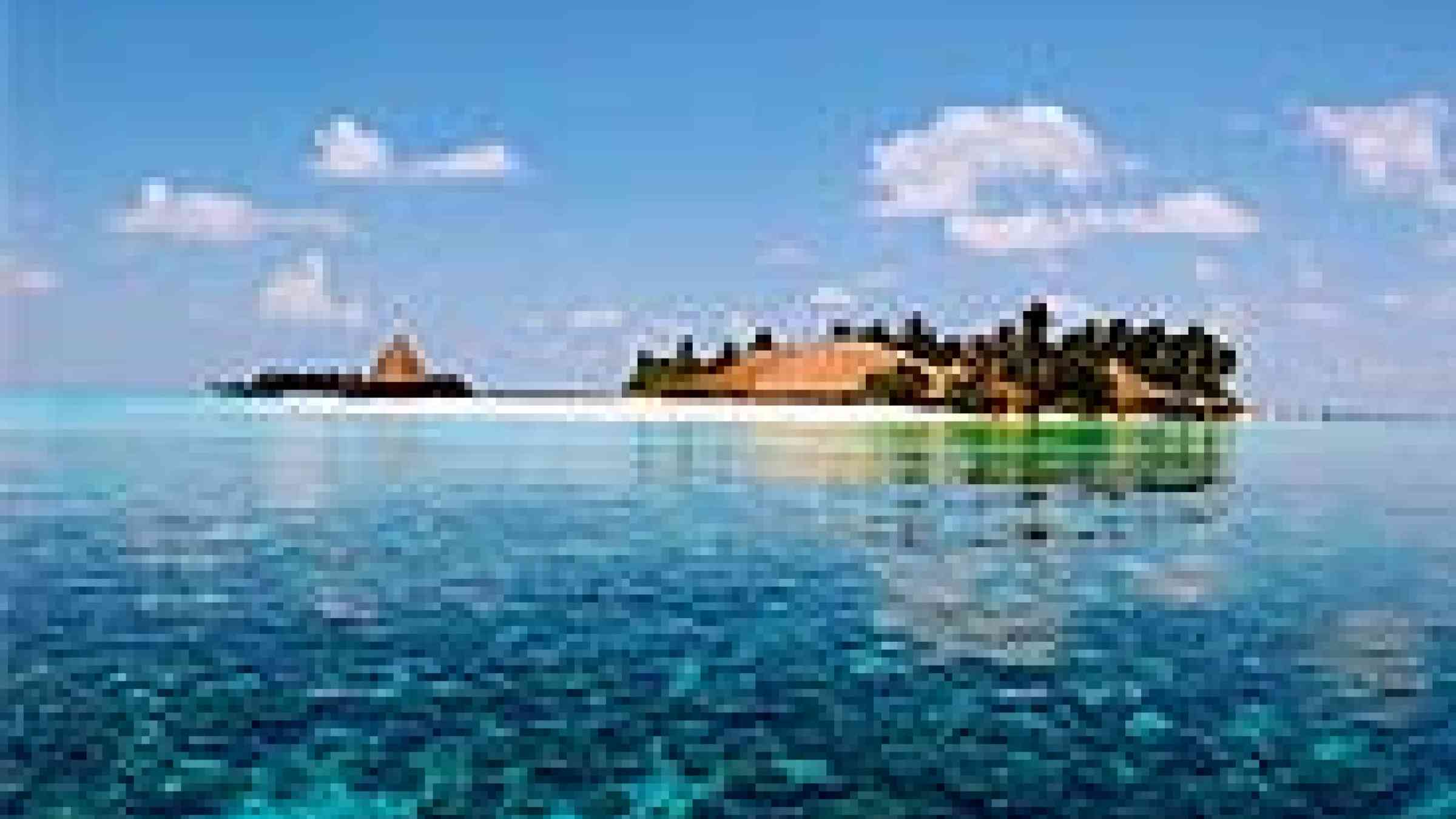Please help us improve PreventionWeb by taking this brief survey. Your input will allow us to better serve the needs of the DRR community.
Maldives steps up fight to delay climate change effects

Photo by Flikr user, Iujaz, Creative Commons Attribution-Noncommercial 2.0 Generic
Bangkok (AlertNet) - Mention the Maldives and sandy beaches, five-star resorts, colourful coral reefs and stunning scenery come to mind - a luxurious getaway. However, the setting that gives this collection of over 1,000 low-lying islands its beauty is also its biggest curse.
The country's existence is threatened by a changing climate, especially by a predicted rise in the sea level. Eighty percent of the Maldives lies no more than one metre above sea level -- not high enough, it seems, to survive long-term -- and it was seriously damaged by the 2004 Indian Ocean tsunami.
The Maldives, which already suffers beach erosion and water shortages, has had to accept its citizens will one day become climate refugees as its sandy shores are washed away, but it has begun to fight back to try to delay that day as long as possible.
"We're one of the most vulnerable nations in the world," Abdulla Shahhid, chief of the National Disaster Management Centre, told AlertNet. "We're a small civilisation, and we're low-lying. The storm surges are very frequent nowadays in Maldives."
The fight-back started more than a decade ago. The capital Male is surrounded by a three-metre-high wall, which took 14 years to build. Japan paid practically the whole $63 million cost, yet it helps protect just one of the 250 inhabited islands.
But as concerns rise over climate-related disasters, the Maldives is embarking on an plan not only to reduce the damage caused by disasters but also to reduce the risk of them happening in the first place.
A coherent defence against nature?
Last week, the Maldives and the U.N. International Strategy for Disaster Reduction (UNISDR) entered into an agreement to find innovative ways to tackle typhoons, droughts and rising sea levels caused by the changing climate.
The idea is for UNISDR and partner agencies to assist the authorities in developing strategic, nation-wide plans to protect the islands from natural disasters. This ranges from top-level meetings to training teachers, engineers, architects and government officials on practical ways to reduce the risks of disasters.
The Maldives -- which is moving from three decades of autocratic rule to a democratically elected head of state - already has several projects, from Banyan Tree Resorts' artificial coral reefs to control beach erosion to multi-purpose shelters and British Red Cross-made houses that can withstand many natural disasters.
Jerry Velasquez, UNISDR's regional coordinator, says the Maldives have so far focused only on mitigating the impacts of climate change, not on reducing risks.
"We need a coherent programme, now it's ad hoc," he said.
The country is heavily reliant on carbon-heavy tourism, with around half a million people flying in to its beaches each year. With the highest per-capita gross domestic product in south Asia, the Maldives will graduate from the least-developed countries list by 2011.
The also requires a change of mindset - from seeing themselves as poor and incapable to being an independent, regional player, and new President Mohamed Nasheed has ambitious plans.
In March, he announced a $110 million plan to become the first country in the world with a zero-carbon economy by 2019, harnessing wind and solar power for energy.
At the time, he said, "We know that the Maldives becoming carbon neutral is not going to decarbonise the world and stop us from annihilation. But at least we could die knowing we've done the right thing."
They feel they have made a start now in that direction.
"In the long-term it's probably inevitable (that people will need to move," said Velasquez. "By doing disaster risk reduction activities actively, we can delay the inevitability by decades. We can buy time."
Written by Thin Lei Win
Explore further
Please note: Content is displayed as last posted by a PreventionWeb community member or editor. The views expressed therein are not necessarily those of UNDRR, PreventionWeb, or its sponsors. See our terms of use
Is this page useful?
Yes No Report an issue on this pageThank you. If you have 2 minutes, we would benefit from additional feedback (link opens in a new window).